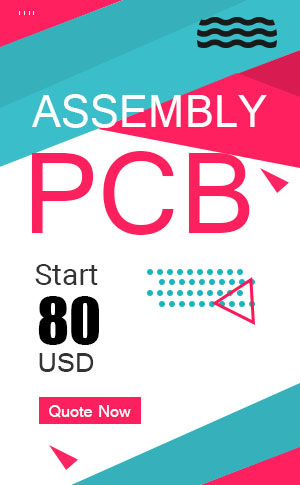General, quoting & support.
Add: Building E, No.58, Nanchang Road, Xixiang , Baoan District Shenzhen City, Guangdong, China
Tel : 0755-27348887
Fax : 0755-27349876
E-mail : svc@pcbastore.com
Factors that Influencing Prices for PCB Manufacturing and Assembly
PCBA Store / 2025-07-25
Contents [hide]
What Are the Factors for PCB Manufacturing and Assembly Costs?
Printed Circuit Boards (PCBs) are key parts in modern electronics. Printed Circuit Boards (PCBs) manufacturing and assembly costs can change a lot based on different technical and logistical reasons. Knowing these factors helps make smart choices for design and budget. In electronic manufacturing, PCBs are super important. But many things affect the cost of their manufacturing and assembly.

Delivery Time
Fast delivery can raise costs. If a customer wants PCBs quickly, manufacturers may need extra workers or overtime. This increases labor and equipment costs. Also, special shipping like air freight or express delivery might be needed. These services cost more. Manufacturers may also need to shift schedules, which adds extra expenses. Quick delivery often means changing processes to finish orders on time.
Circuit Complexity
The complexity of a circuit is a big factor in PCB costs. Complicated circuits need more parts, bigger boards, and often more layers. This raises the cost of materials. It also makes assembly take longer and be harder.
PCB Size
Bigger PCBs need more base material and copper foil. This makes material costs higher. Also, larger PCBs may need trickier manufacturing steps and bigger machines. This adds to the total cost. Plus, shipping bigger PCBs can cost more due to extra charges.
Layer Count
More layers mean more materials like base, copper foil, and insulation. Multi-layer PCBs need advanced tech for lining up and joining layers. These boards require better machines and skills to ensure everything lines up right.
Substrate Material
The choice of material affects pricing a lot. Common FR-4 fiberglass materials are usually cheaper than high-frequency ones like PTFE. High-tech uses may need special materials like RO4350B. These special materials cost more. Thicker materials also use more raw stuff, adding to costs.
Trace Width and Spacing
Smaller trace widths and spaces need finer manufacturing steps. They also need high-level equipment like precise lithography and drilling tools. Smaller traces and spaces can lead to more mistakes during manufacturing, which raises costs.
Drill Hole Size and Quantity
Smaller drill holes need more exact drilling tools and finer bits. This increases processing costs. Also, more holes mean more material is cut away. This leads to material loss and higher costs.
Surface Treatment
Surface finishes vary in performance and price. For example, HASL (Hot Air Solder Leveling) is fairly cheap. But ENIG (Electroless Nickel Immersion Gold) costs more. The choice depends on needs like solderability or rust protection.
Copper Thickness
Thicker copper layers carry more current but cost more. Copper foil is a main part of PCBs, and its price depends on thickness. Thicker copper also needs more steps and stronger equipment. This increases labor time and chemical use during etching.
Hidden Costs of PCBs
Some costs are not obvious but can affect the total price:
· Prototype Fabrication and Testing Costs: Before PCB manufacturing, prototypes and tests are needed to check if the design works right.
· Assembly and Testing Costs: After manufacturing, PCBs need assembly and testing to make sure they work properly.
· Quality Control and Certification Costs: Extra tests and certifications ensure PCBs meet quality standards.
· Transportation and Logistics Costs: This includes shipping PCB materials to the factory and any extra handling or storage fees.
How to Reduce PCB Manufacturing and Assembly Costs?
Here are ways to save money:
· Simplify Circuit Design: A simpler design uses fewer parts. This lowers buying and assembly costs.
· Reduce Layer Count: Fewer layers mean lower material and manufacturing costs.
· Use Standard Components: Standard parts are easy to find. They also make designs simpler.
· Optimize PCB Size and Shape: Smaller PCBs use less material. This cuts manufacturing costs.
· Apply Design for Manufacturability (DFM) Principles: DFM principles help make designs easier and cheaper to manufacture.
Partner with PCBAStore for High Quality PCB Manufacturing and Assembly

PCBAStore is a top PCB manufacturing and assembly company in China. They’ve offered full electronic manufacturing solutions for 16 years. Their services cover everything from prototype development to large-scale production. They work with industries like medical devices, automotive systems, consumer electronics, industrial automation, robotics, and telecommunications equipment.
They specialize in high-tech PCB prototypes. Their monthly output includes about 1,000 different models, covering 20,000 square meters. They deliver 95% of products on time. Their factory supports advanced tech like HDI boards, heavy copper up to 30 oz., and via-in-pad designs. This ensures they meet all customer needs efficiently.
PCBAStore services include:
· One-stop solution from layout to box build
· Quick-turn fabrication within 24 hours
· No MOQ or setup charges
· Global logistics support with 99% on-time shipping rate
· ISO9001-certified quality control systems
FAQ
What’s the minimum order quantity?
PCBAStore has no minimum order quantity. They support prototypes as small as one piece.
How fast can delivery be?
They offer express services with fabrication as fast as 24 hours and assembly in 8 hours, depending on the project.
What file formats are accepted?
They accept Gerber files (.pcb/.pcbdoc/.cam), BOM (.xls/.csv), centroid files (.xls/.csv), and more.
Can customers use their own components?
Yes. PCBAStore offers turnkey (they source), consigned (customers supply), or partial turnkey options based on preference.
Is testing done before shipment?
Yes. They do visual checks, AOI testing, X-ray inspection (for BGA/QFN), ICT tests, and functional circuit testing before shipping.







